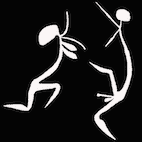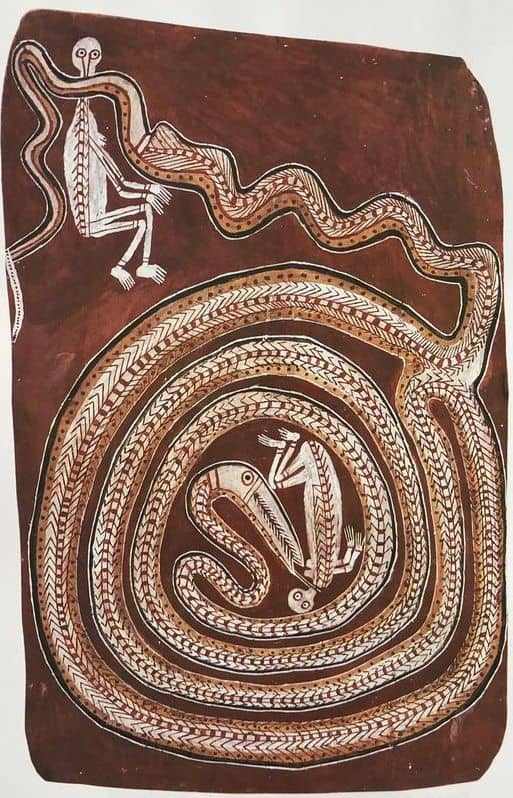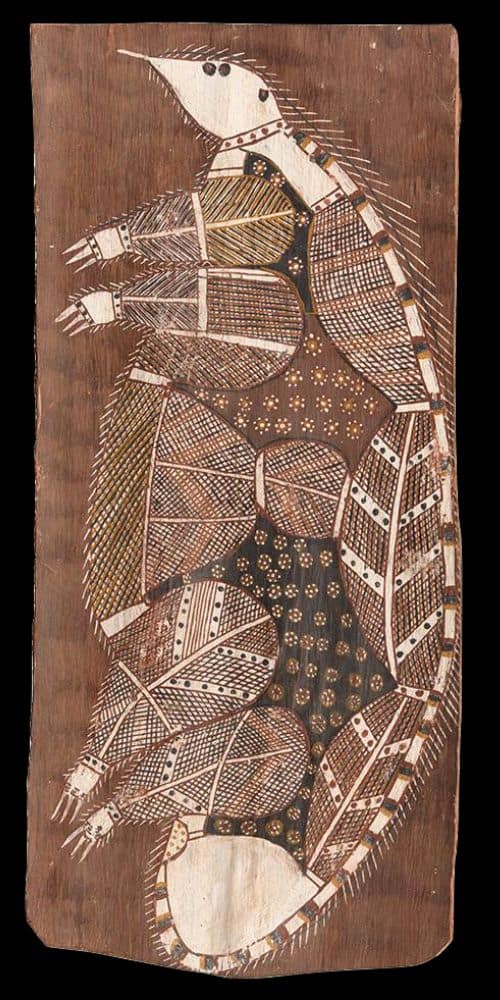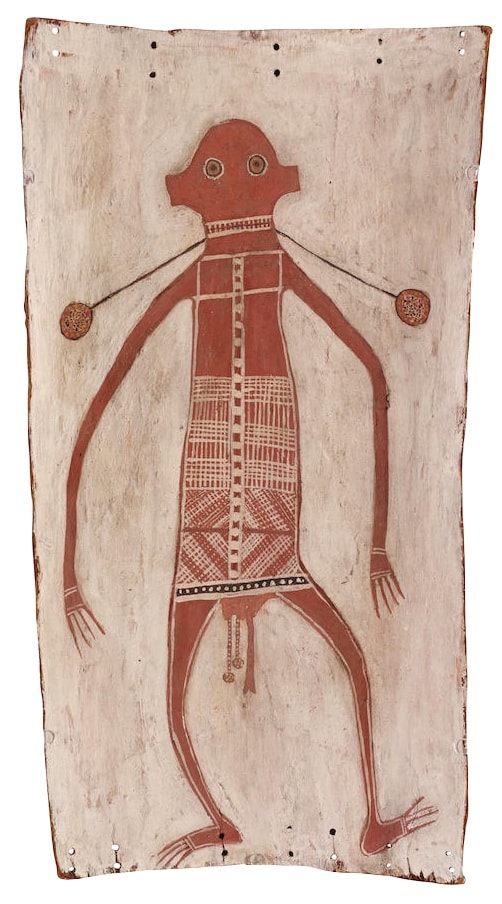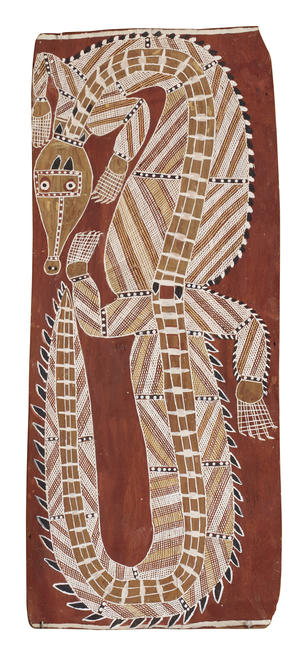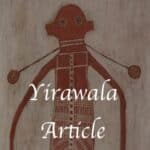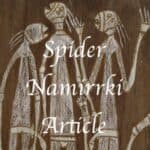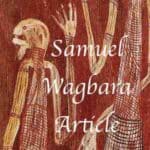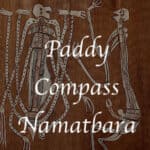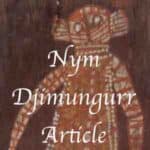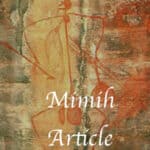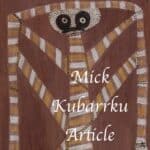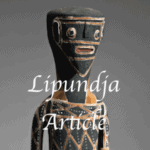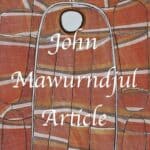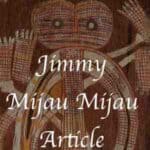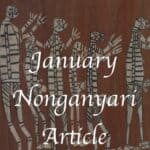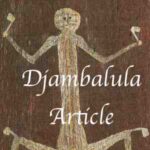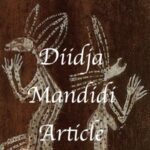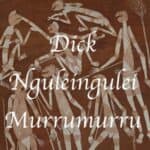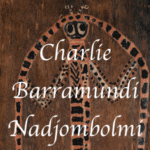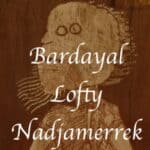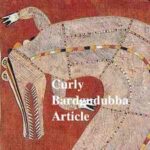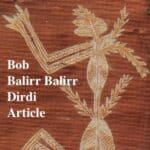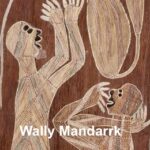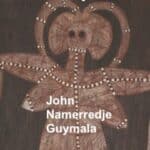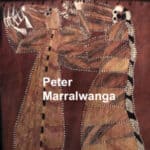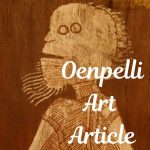Yirawala : Picasso of Arnhem Land
Yirawala is one of the most prolific and respected Aboriginal bark Painters. His works are unique because he does not stick to a particular regional style. Due to his travels, he had many regional influences. He manages to blend those into a style unique amongst bark painters.
The aim of this article is to assist readers in identifying if their aboriginal bark painting is by Billy Yirawala. It compares different examples of his work.
If you have a Yirawala bark painting to sell please contact me. If you want to know what your bark painting is worth please feel free to send me a Jpeg. I would love to see it.

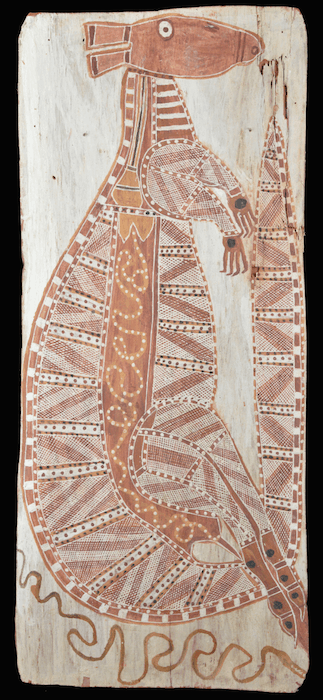
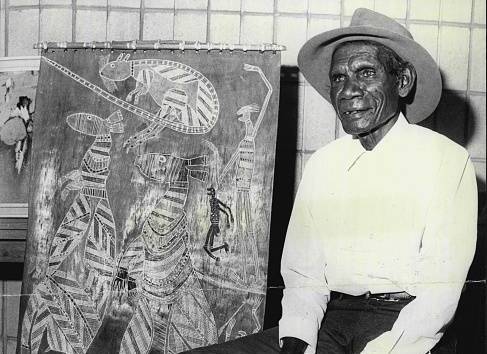
Yirawala Style
Widely regarded as one of the most influential figures in 20th-century Aboriginal art, Yirawala holds a seminal place in the canon of Australian art history. A senior ceremonial leader and master bark painter from the Kuninjku (Oenpelli) community of Western Arnhem Land, Yirawala was both a cultural custodian and a bold innovator. His work transcended clan boundaries by harmoniously integrating the artistic traditions of diverse Arnhem Land groups—an unprecedented achievement at the time.
As a recognised authority on Aboriginal law and ancestral dreamings, Yirawala was uniquely positioned to depict powerful spiritual beings rarely rendered with such authority: Luma Luma, the giant ancestral ogre; the Rainbow Serpent, a pan-Aboriginal creator being; and the elusive, skeletal Mimih spirits, guardians of the escarpment. His paintings are visual archives of sacred ceremony, many of which centre around the complex Mardayin rites—a cycle of ancestral narratives that unites the dual moieties of Dhuwa and Yirridjdja.
Yirrwala painted exclusively on flattened sheets of eucalyptus bark, typically with a monochrome red, black, or white ochre background, and meticulously executed with fine rarrk (crosshatching). He was among the first Aboriginal artists to insist that his bark paintings be recognised not as ethnographic artefacts, but as fine art—a position he maintained during his 1970s touring exhibitions, which helped catalyse wider appreciation for Aboriginal painting.
His legacy reverberates through generations of Arnhem Land artists, many of whom he mentored directly. By sharing techniques across tribal boundaries and reimagining sacred imagery through a stylistic lens that was both reverent and inventive.
Yirawala: From Oenpelli to Croker Island – The Evolution of a Master’s Hand
The early bark paintings of Billy Yirawala, created during his time in Oenpelli (now Gunbalanya), stand as powerful evocations of ancestral tradition and echo the painted rock shelters of Western Arnhem Land. His early artworks often collected under the name of irrvala Y’wala or Yirrwala connecting contemporary bark painting to an artistic lineage that spans millennia. Unlike his later works, Yirawala’s earliest paintings eschew rarrk (crosshatching), favouring instead the solid, silhouette-like forms common in early Kuninjku ceremonial art.
Yirrwala’s stylistic transformation was catalysed by his relocation to Croker Island in the 1950s. Immersed in the region’s fluid and lyrical painting tradition, his figures began to shift—limbs curved, torsos arched, and a dynamic sense of movement animated each composition. This evolving visual language reflected the influence of Croker Island masters such as Namatbara, Nanganyari and Midjau Midjau. whose expressive forms inspired Yirawala to break new ground.
Among the defining qualities of Yirawala’s Croker Island period is the kinetic vitality of his compositions. Figures appear to dance across the bark, while animals are rendered with a grace and sinuous rhythm that evokes both mythic spirit and natural form.
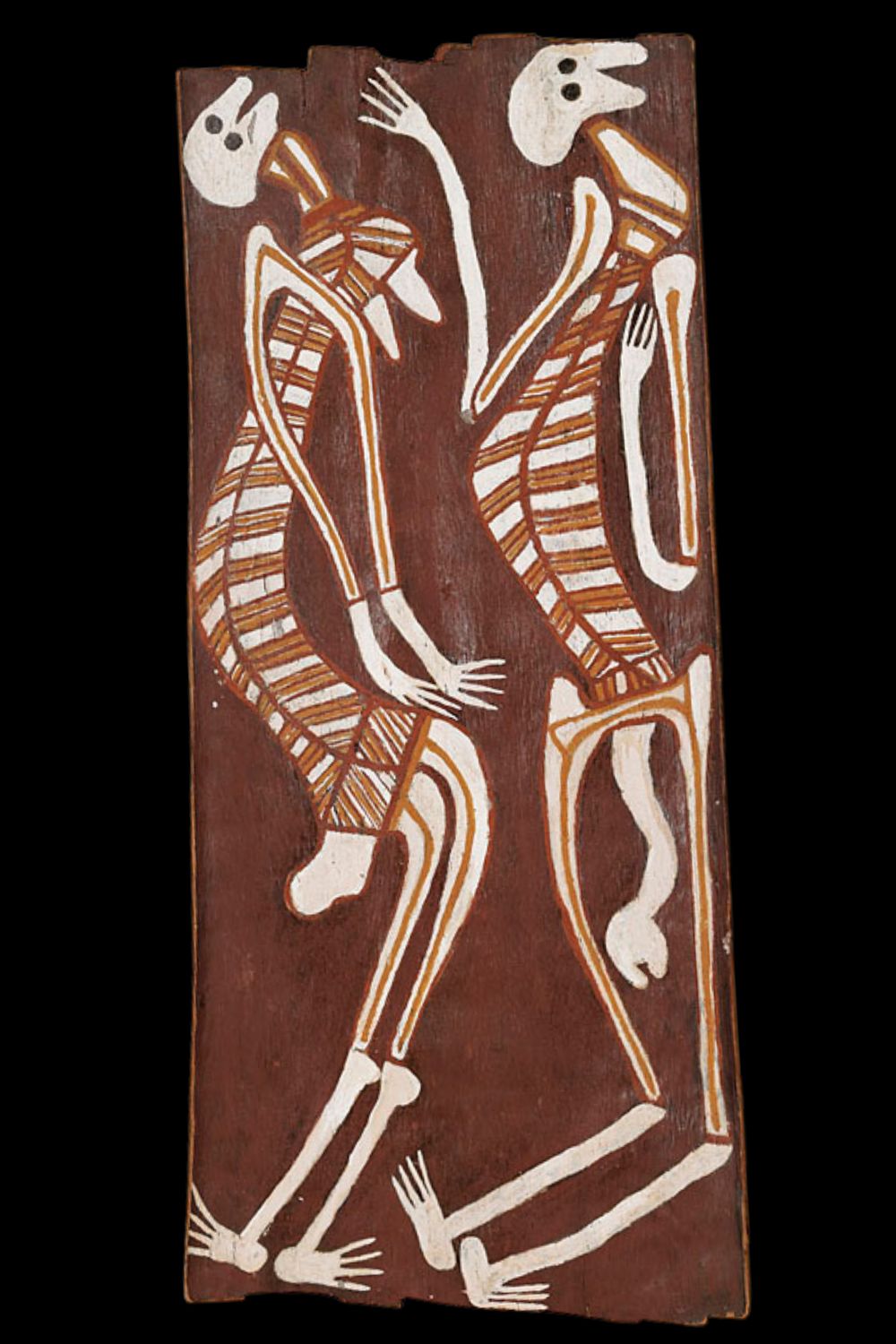

Yirrkala Influence: Cross-Cultural Synthesis in the Work of Yirawala
Yirrwala’s artistic journey reached a pivotal juncture during his time at Yirrkala Mission, where he shared a coastal camp with some of the most esteemed Dhuwa moiety artists of the era— Mithinarri, Mawalan Marika and Wandjuk Marika.. Immersed in the ceremonial life and artistic practices of the Yolngu people, Yirawala was introduced to and mastered the refined technique of rarrk—fine cross-hatching used to infuse sacred designs with shimmering spiritual presence.
This exposure marked a transformative phase in Yirawala’s career. He began to incorporate Yirrkala-inspired cross-hatching into the bold, figurative compositions of his Western Arnhem Land heritage. The result was a striking fusion: fluid ancestral beings and totemic animals rendered in the distinctive Oenpelli style, now enlivened by the luminous complexity of cross hatched designs.
These hybrid bark paintings resonated powerfully with both Indigenous and European audiences. Collectors were captivated by the visual sophistication of Yirawala’s work—recognisable mythic forms intricately adorned with layered rarrk, each stroke echoing ceremonial intent and regional dialogue. In merging discrete visual languages, Yirawala transcended local stylistic boundaries and emerged as a master of pan-Arnhem Land painting.
Far from diluting tradition, Yirawala’s cross-cultural synthesis was deeply strategic. He used his art as a vehicle for cultural diplomacy, conveying the richness of Aboriginal cosmology to outside audiences while maintaining fidelity to sacred protocols. His innovations helped redefine bark painting as fine art on a national stage.
When Yirawala returned to Oenpelli, he brought with him not only new techniques, but a new ethos—one that embraced artistic exchange, stylistic integration, and cultural leadership. His example encouraged a generation of artists to see beyond geographic and ceremonial divisions, shaping the future of contemporary Aboriginal art.

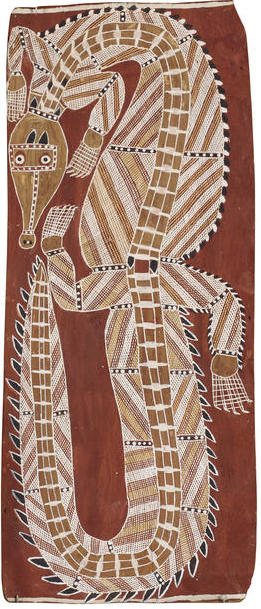
Opposite: Crocodile by John Mawurnddjul
The School of Yirawala: A Legacy of Innovation in the Liverpool River Region
The Marrkolidjban outstation, nestled in the Liverpool River region of Western Arnhem Land, became a quiet crucible for artistic revolution under the guidance of Yirawala—also spelled Yirrwala, Irrwala, Irvala, or Yirrawala. It was here that a new generation of Aboriginal bark painters emerged under his influence, transforming tradition through technical refinement and stylistic evolution.
Among Yirawala’s most prominent protégés were Curly Bardkadubbu, Peter Marralwanga, and John Mawurndjul—each of whom would go on to play a significant role in the development of contemporary Aboriginal art. Central to their training was the adoption and mastery of rarrk (fine cross-hatching), a technique Yirawala had adapted from his time at Yirrkala .

Under Yirrwala’s mentorship, cross-hatching ceased to be a purely regional motif; it became a dynamic visual language shared across clan boundaries. His teachings marked the waning of the older Oenpelli school typified by artists like Murramurra and Lofty whose works retained the x-ray style and parallel linework of rock art tradition. Even artists such as Midjau Midjau of Croker Island a former mentor, changed style due to Yirawala’s innovations.
The impact of the School of Yirawala is profound. Not merely a teacher, Yirawala was a catalyst—transmitting not only technique, but a vision of what Aboriginal art could become: dynamic, evolving, and recognised on its own terms. His school laid the foundation for the cross-regional visual dialogue that defines the richness of Western Arnhem Land painting today.
Yirawala Bark painting Images
All images featured in this article are presented strictly for educational and informational purposes.
This website may include copyrighted material for which specific authorization has not been obtained from the copyright owner.
All such images are presumed to be the intellectual property of the respective artist or their estate, and are used in accordance with principles of fair dealing or fair use under applicable copyright law.
